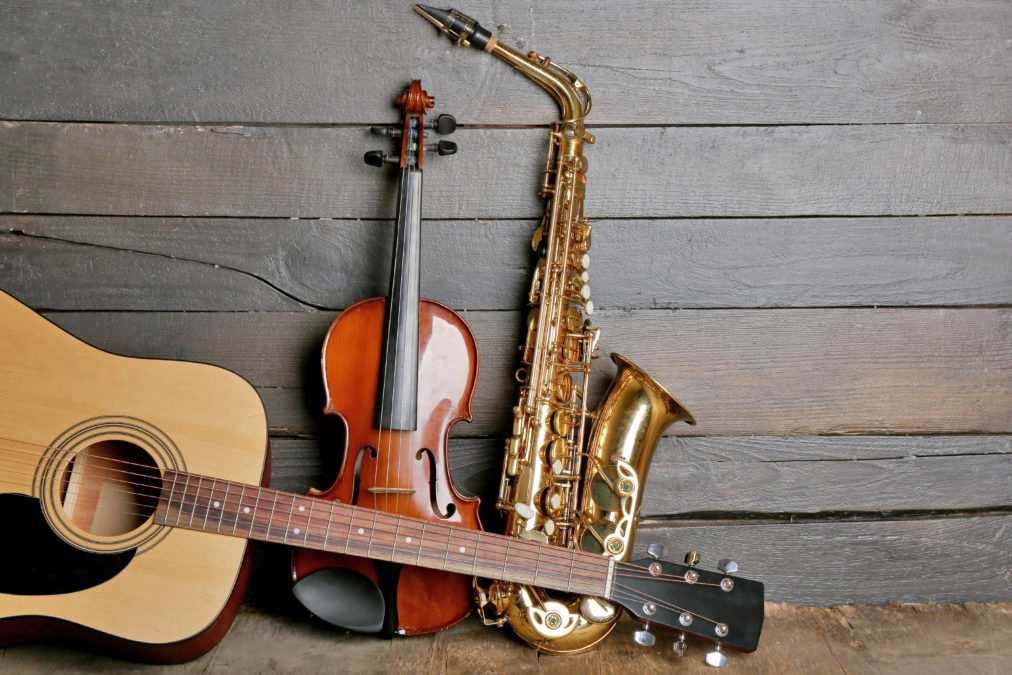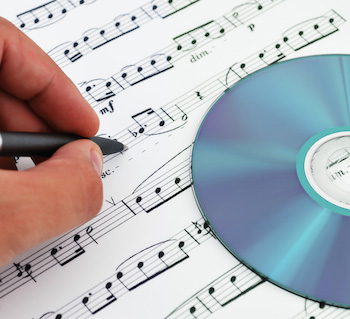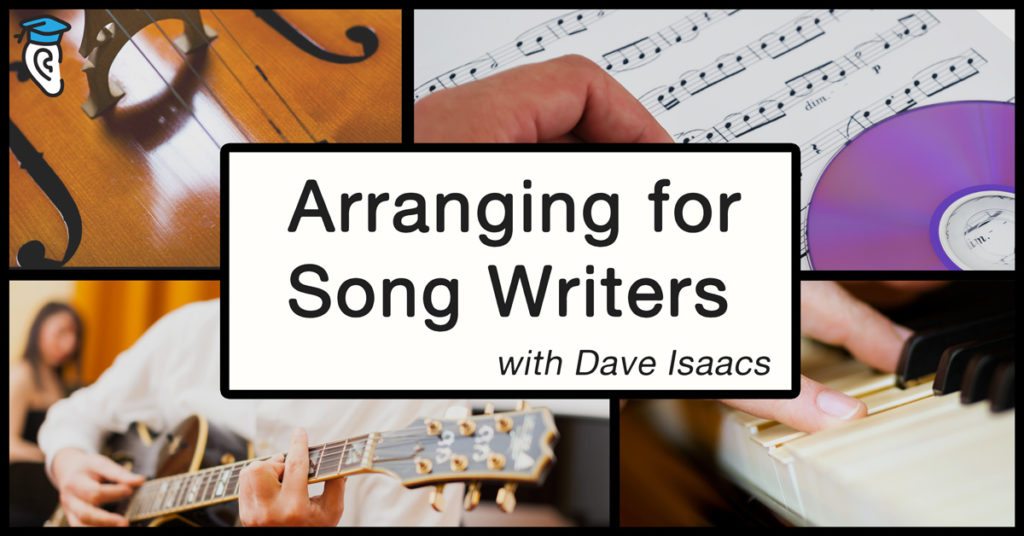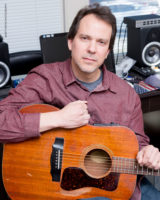Arranging is the process of making choices about how a piece of music is to be performed, including details of instrumentation, the way the harmony is expressed, and the form or structure of the piece. To put it simply, arranging decisions take a general musical idea – for example, a series of chords or a basic beat – and make it specific to the song.
The importance of arrangement
We can all think of examples of songs that have distinctive, “signature” musical parts. For example there are hundreds and hundreds of songs with a 4-chord I-V-vi-IV cycle, but we can recognize “Don’t Stop Believin’” by Journey from the first note of the opening piano part.
“Don’t Stop Believin’” by Journey:
… and a whole list of other songs using the same chord progression:
This is what the arranging process does: making general ideas specific, or conventional ideas unique.
From a songwriter’s perspective, this is important stuff.
It could be argued that a lyric and melody constitute a complete song, and that all the other details fall under “arrangement”. But even if that’s true, it doesn’t change the importance of arranging in defining the character (vibe, feeling, energy, whatever you choose to call it) of a song.
Arranging a Song
If a writer’s ultimate goal is to communicate emotion, then it would make sense to suggest that a song with a well-defined character will communicate that emotion more directly and powerfully.
So let’s take a look that how different musical elements create that character, and how good arranging works with those elements to maximize the impact of the music.
1. Form
The first and possibly most important arranging element a songwriter needs to consider is form.
A song needs to have a clearly defined structure to make sense to the average listener, and there are expectations in popular music about what that structure should be. That doesn’t mean that an artist shouldn’t strive to be creative, but if the goal is to write a song with commercial potential then those expectations need to be taken into account.
For example, a pop song needs to have a hook, and that hook will generally occur in the chorus and will be repeated throughout the song. We expect lyrics in popular music to follow a consistent meter and rhyme scheme. We expect the phrasing of the music to fit the phrasing of the lyric in a more-or-less symmetrical way: couplets or quatrains of the same length, organized as question and answer (a.k.a. call and response).
One part of the arranging process, then, is to make sure the melody and chordal structure have enough symmetry in the way they’re organized to be easily understandable in a casual listen.
Again, this is more of a factor in music that’s intended to have commercial potential. Of course, such things can’t always be predictable! But your 28-minute math-rock opus built on a tone row from Arnold Schoenberg’s “Pierrot Lunaire” isn’t likely to get much radio play…
2. Feel / Groove
The next crucial element to consider is feel or groove.
 A writer with limited musical skills is likely to use the same rhythmic feel over and over again, especially when writing on a rhythm instrument like guitar. Because rhythm on guitar can be learned as a series of down-and-up movements in the strumming hand, it’s easy for muscle memory to lead you repeatedly into the same patterns.
A writer with limited musical skills is likely to use the same rhythmic feel over and over again, especially when writing on a rhythm instrument like guitar. Because rhythm on guitar can be learned as a series of down-and-up movements in the strumming hand, it’s easy for muscle memory to lead you repeatedly into the same patterns.
It’s also easy to leave decisions on groove to an accomplished rhythm section in the recording studio. This can be a good idea; there’s a lot to be said for trusting skilled professionals.
But at the same time, every song has what we might call a core rhythmic identity that makes it feel the way it does, and finding it is as simple as asking the questions:
- Does the song pump, swing, rock, or float?
- How does it make your body move?
Having a basic idea of this which you can communicate to others makes it much easier for the pros to start off on the same page. Remember, they probably have a wider range of options to choose from than you do; providing them with a starting point will point them in a direction that supports your vision rather than changes it.
One excellent way to determine the core rhythmic character of a song is to sing or even talk it without any accompaniment. Ask yourself what you feel in your body as you sing.
- Where is the pulse?
- Where are the strong beats?
- Is the rhythm fluid—or more angular and jagged?
- Is the texture spacious or busy?
- How much of a sense of movement does it create?
You don’t need to be able to articulate this in “technical” terms, but simply in terms of how the music should feel – hence the use of the term “feel” for this core rhythmic identity.
3. Instrumentation
The traditional definition of arranging also includes instrumentation, both in the general sense (what instruments are played) and more specifically (how the individual parts are played by each instrument).
 Many songwriters have a sense of what the instrumentation might be… Some people hear complete arrangements in their heads, even if they couldn’t play or sing the parts.
Many songwriters have a sense of what the instrumentation might be… Some people hear complete arrangements in their heads, even if they couldn’t play or sing the parts.
This is wonderful, in that it allows the writer to participate in the production process. However, there’s a trap you should be careful to avoid. The song itself needs to stand on its own with the character the writer intended to communicate.
Sometimes the impulse to use a particular instrument is coming from a shortcoming in the song that the writer/producer is trying to make up for. If you want to write a neo-soul tune, just adding a saxophone to a pop song won’t do the trick! The tempo, feel, and chordal vocabulary need to be appropriate to the style as well.
If you want to have stylistic range as a songwriter, familiarize yourself with the musical details of different styles. A country song uses a different musical vocabulary than a rock song or an electronica-influenced pop song.
→ Explore genres in the Open Your Ears series
There’s also another creative benefit: since popular music is also evolving, having a broad musical vocabulary allows the writer to pull from elements of different genres to create something new.
Do you need to know music theory?
You might be concerned that each of the areas above requires in-depth music theory knowledge. Actually, you don’t need to know the exact musical terminology or lots of music theory to make these decisions.
What you do need is a sense of how one style is different from another in terms of the primary musical elements: form, feel/groove, harmony, and melodic phrasing. These are all things you can learn to listen for, regardless of whether you can name or spell the chords.
Remember, music is ultimately about communicating emotion, and different sounds create a different emotional context.
When working with others
You can speak in completely abstract, artistic terms and still communicate to professional musicians what you want the song to feel like. This is the best direction you can give. At that point, it’s best to step back and let the players interpret what you’ve given them.
Changes can be made later if something isn’t right, but giving clear information about your intended feeling and emotional content will always steer good musicians in the right direction.

When working solo
Arranging decisions are also important to the performing songwriter who works alone and doesn’t need to communicate with other players.
Having clearly-defined musical parts can be even more important in a solo setting, since there’s nothing else adding to your sound. Simply strumming back and forth on a D chord doesn’t define much, but playing it with a definitive rhythm sets up the song’s core rhythmic identity in the listener’s ear.
If you perform and haven’t spent much time thinking about groove, start! Listen to songs you love and pay attention to the rhythm section. A skilled solo performer playing guitar or piano can create as much sense of musical movement as a full band, by using rhythm to create the illusion of multiple parts.
Get to know your instrument and the way that great players create their parts. Pay attention to the role or function of each part. Some elements create musical movement, some add color or texture.
Don’t worry about terminology, just notice what you hear and express it in a way that makes sense to you.
Conclusion
The bottom line is: looking at arranging as a key part of the song writing process lets you find more music inside the basic elements of your song. This is a big part of what makes the song or performance dynamic and engaging to the listener.
Creative people can be misled into a false belief that you need to choose between an intuitive approach and an educated one. Worse still, that musical knowledge will somehow limit their creativity. Sometimes this belief borders on superstition.
 In fact, unless you have been gifted with limitless musical ability, there will always be something new you can learn to bring something fresh to your work. Even a little musical knowledge is a powerful tool, and allows a writer to develop the craft element of songwriting.
In fact, unless you have been gifted with limitless musical ability, there will always be something new you can learn to bring something fresh to your work. Even a little musical knowledge is a powerful tool, and allows a writer to develop the craft element of songwriting.
The best part is that listening carefully for arrangements along with lyrics and melody will open your ears to new possibilities even if you have no musical training at all.
If you didn’t have music in you, you’d be a poet or novelist instead of a songwriter. So above all, trust your instincts, recognize that there’s always something new to learn, and pay attention to what you hear in a new and more conscious way. Your work will almost certainly grow in power and depth as a result.








